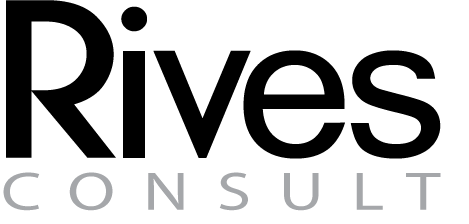Steps to Ensure Compliance in the Medical Device Sector
- Rives

- Jun 18
- 4 min read
Navigating the complex landscape of the medical device sector can be challenging. Compliance with regulatory standards is critical not only for ensuring patient safety but also for gaining a competitive advantage. This blog post outlines essential steps to help businesses in the medical device industry ensure compliance effectively.
Understanding Medical Device Compliance
Medical device compliance refers to adhering to the regulations set forth by governing bodies such as the U.S. Food and Drug Administration (FDA) and the European Medicines Agency (EMA). Compliance is not only necessary for legal operation but also builds consumer trust in your brand. Medical devices are categorized based on risk, and the level of compliance required often correlates with the potential risk associated with each device.
For example, Class I devices, like tongue depressors, might only require general controls, while Class III devices, like pacemakers, face stringent regulations due to their higher risk. Understanding these classifications is the first step toward compliance.

Establishing a Compliance Management System
Creating a robust compliance management system (CMS) is essential. A CMS helps to monitor, manage, and maintain regulatory compliance. This system should include:
Document Controls: A central repository for all essential documents, ensuring easy access and traceability.
Training Programs: Regular training sessions for personnel involved in product development and management can keep everyone informed about the latest compliance requirements.
Audit and Monitoring Tools: Implementing tools for regular audits can identify non-compliance issues before they escalate.
According to recent studies, organizations with a dedicated CMS experience 30% fewer compliance issues than those without one. This statistic underscores the importance of a structured approach to regulatory compliance.

Engaging with Regulatory Agencies
Strong relationships with regulatory bodies are vital. Engaging with agencies such as the FDA can provide insights into changes in compliance requirements and expectations. Here are some ways to foster these relationships:
Pre-Submission Meetings: Before formally submitting a medical device application, consider requesting a pre-submission meeting. This opportunity allows you to get initial feedback on your compliance strategy.
Stay Updated: Regularly review guidelines, draft frameworks, and notices from regulatory agencies. Sign up for newsletters from the FDA or EMA to ensure you don't miss critical updates.
Consult Expert Help: Relying on external medical device consulting services can provide specialized insight into regulatory expectations and help navigate complex compliance issues.

Implementing Quality Management Systems (QMS)
A well-implemented Quality Management System (QMS) is vital for compliance. ISO 13485 is the international standard that outlines requirements for a QMS in medical devices. Adhering to this standard ensures that your devices consistently meet both customer expectations and regulatory requirements.
Key components of a QMS include:
Risk Management: Conducting thorough risk assessments at each development stage is crucial.
Change Control: All changes to processes, products, or regulatory compliance must be systematically controlled and documented.
Supplier Management: Ensure that suppliers and manufacturers also meet quality standards. Regular audits can help maintain these standards.
According to the FDA, companies with a certified QMS have significantly reduced instances of recalls and non-compliance, reflecting the importance of rigorous quality controls.
Continuous Training and Education
Compliance is not a one-time effort; it requires continuous investment in training and education. Regular training sessions for staff not only promote compliance but also enhance product quality and safety. Consider these strategies:
Workshops and Seminars: Conduct regular training sessions to keep your team informed about new regulations and compliance strategies.
Certification Programs: Encourage team members to seek certifications in relevant areas of medical device compliance and quality management.
Knowledge-sharing platforms: Establish internal forums or databases where employees can share compliance-related resources and information.
According to research, companies that actively invest in employee training experience 12% less regulatory risk than those that do not prioritize staff education and training.
Preparing for Inspections and Audits
Inspections and audits are integral for compliance within the medical device sector. Here’s how to prepare effectively:
Mock Audits: Regularly conduct internal audits to identify potential areas of non-compliance before official inspections occur.
Documentation Readiness: Ensure that all documentation is complete and easily accessible. A well-organized system can significantly reduce stress during an official audit.
Staff Preparation: Train your staff on how to interact with inspectors, including how to respond to questions and provide necessary documentation quickly.
According to the FDA, being well-prepared for inspections can alleviate the potential for adverse findings and help maintain a good relationship with regulatory agencies.

The Role of Technology in Compliance
Leveraging technology can also significantly enhance your compliance efforts. Software solutions that focus on compliance management can streamline numerous processes, including:
Automated Documentation: Tools that automate document creation and storage help maintain accuracy and ease of access.
Risk Assessment Software: Use technology to perform risk analyses systematically and document these assessments comprehensively.
Training Platforms: Implement digital training programs that can track employee education and compliance training metrics.
Studies indicate that companies utilizing compliance technology experience up to 20% greater efficiency in meeting regulatory requirements, highlighting the benefits of modern solutions in maintaining compliance.
Final Thoughts on Medical Device Compliance
In the ever-evolving medical device landscape, a proactive approach to compliance can be a game-changer. By investing in a comprehensive compliance management system, engaging with regulatory agencies, and adopting quality management practices, organizations can not only ensure compliance but also foster a culture of quality that benefits both the company and its customers.
Remember, the journey to compliance may be rigorous, but the rewards in market access, patient safety, and trust are invaluable. Prioritizing these elements will pave the way for long-term success in the medical device sector.



